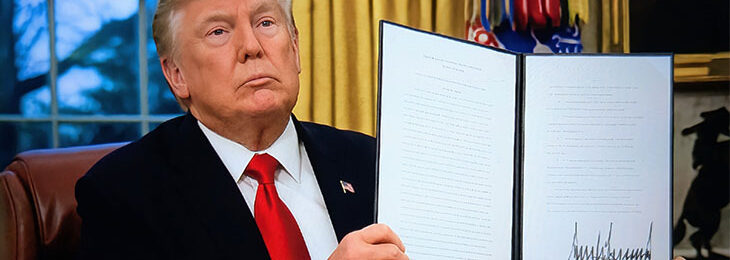
Islamic finance refers to a form of financing which is in compliance with Shariah or Islamic Law principles. Modern Islamic finance emerged in the 1970s, following the first oil price shock of 1973. Today, Islamic finance has globally extended to Muslim, as well as to non-Muslim countries; it constitutes a small but growing sector of the overall financial industry, and nearly all major banks are entering into the Islamic banking market.
The major principles of Islamic finance, which differ from conventional debt finance, are a ban on interest (riba), a ban on uncertainty (gharar), adherence to risk sharing and profit sharing, promotion of ethical investments and asset backing.
This study aims to find out if Islamic finance is more or less vulnerable to be misused by money launderers or those who finance terrorism. Two issues will not be dealt with in an extensive way: money laundering/terrorist financing (ML/TF) risks on the Islamic financial sector and ML/TF risks of the Islamic financial sector (bank's complicity), since these risks are the same as those related to the conventional financial sector. In fact, the negative consequences of ML/TF activities on a financial institution, whether Islamic or conventional, can be described as operational, legal, reputational and concentration risks.1 Moreover, a bank's complicity, whether in the Islamic or the conventional financial sector, definitely facilitates financial crimes.
AML/CTF Compliance in Islamic Financial Institutions
While the risk of non-compliance with Shariah principles is exclusive to Islamic banks, the risk of non-compliance with AML/CTF laws and regulations is common to conventional and Islamic banks. AML/CTF policies and procedures must comprise among others: customer identification, ongoing monitoring of accounts and transactions, recordkeeping, and suspicious transactions reporting.2 In this context, an enhanced Know Your Customer (KYC) policy is a vital necessity for any Islamic bank especially in the course of business financing.
In fact, Islamic banks usually enter in a "partnership" with their customers, which is contrary to conventional banks that rely on a fixed and predetermined return and are consequently less occupied with the integrity and legitimacy of their customers and generally more concerned about the underlying assets and securities. Therefore, Islamic banks have to know their customers very well, as well as their business activities and sources and uses of funding. Moreover, the risk and reward-sharing model oblige Islamic banks to leave no stone unturned in order for them to make the highest possible profit out of each investment.
In addition, Islamic banks are not allowed to invest in businesses that are considered haram (prohibited) such as businesses that deal in pornography, alcohol, gambling, pork-based products, etc. Thus, in order to be Shariah-compliant and to avoid reputational harm, Islamic banks have to be very cautious with respect to their clients, making sure that their funding sources are not resulting from criminal or non Shariah-compliant activities.
Moreover, Shariah-compliant financing is mostly asset-based and used to finance defined material assets. This feature allows Islamic banks to know the actual utilization of their funds.
Last but not least, Islamic banks are required, in addition to standard audits, to rely on a Shariah board that would review and approve financial practices and activities for compliance with Islamic principles. Such reviews increase the probability of identifying any criminally operated accounts. This exclusive compliance characteristic of Islamic finance should be recognized as a credible prevention of terrorist financing and money laundering.
Compared to conventional banks, Islamic banks are in a better situation to identify and to prevent illegal transactions including ML/TF activities, due to their active participation and knowledge of their customers.
ML/TF Typologies vs. Islamic Finance Methods
ML/TF risks that a financial institution faces depend on many factors, including its customer base, location, products and services and its size. What matters for this study are risks related to products and services. In fact, an important element of risk assessment is to review new and existing products and services in order to determine how they may be misused for ML/TF purposes.
Islamic finance utilizes relatively sophisticated financial methods in order to mimic conventional financial practices, and that is done by using simple contracts such as sales and leases. It is interesting to question if the Islamic financial methods make it more or less susceptible to abuse by terrorist financiers and money launderers than conventional ones. Only vulnerability of services and products offered by Islamic banks to ML/TF operations is going to be tested. As previously mentioned, bank's complicity will not be addressed in this article and the subject matter will be only viewed from the client's perspective, a client supposedly who wants to launder dirty money or to finance terrorism.
Differences and Similarities between ML/TF and Islamic Finance Schemes
In Islamic finance, the validity of a transaction does not depend solely on the final outcome but also on the activities and the sequence of the process used in realizing the result. If an operation is done in compliance with Shariah rules, it is considered halal even if the final product seems like a conventional banking product. In this respect, schemes employed in Islamic finance in order to avoid interest and other prohibited factors remarkably resemble the schemes used by financial criminals.
For instance, the use of Islamic financing methods compels Islamic banks to possess the underlying asset, even sometimes for a short period of time (like in murabaha financing). Some experts argue that the "asset (or commodity)-based" feature of Shariah-compliant financing can pose high risks, since trading asset and commodity at profits or losses is a typical technique employed to obscure the source of funds (in money laundering) or their destination (in terrorist financing).
However, two remarks should be highlighted in this regard. The first one is that in a typical ML/TF case, it is the criminal who uses such methods to conceal the origin (ML) or the destination (TF) of funds, while in Islamic finance it is the Islamic financial institution itself that employs these methods in order to "mimic" conventional financial products in a Shariah-compliant manner. The client does not participate in any way in the engineering of such complicated schemes; from his/her perspective, he/she will only benefit from a final product that resembles, to a large extent, the one provided by conventional banks.
The second remark is that one should not forget that ML/TF methods are legal in their essence, but when used and combined together in order to fulfill an illegal purpose then the whole scheme becomes criminal. Although the methods used in Islamic finance may resemble those used in criminal financial activities, they are used in order to fulfill a legitimate purpose. For instance, commodities and assets used in Islamic finance as levels of separation, resembling "layering" methods of criminal financiers, represent purely legal financial dealings.
In addition to the use of underlying assets, Islamic financial institutions commonly use Special Purpose Vehicles (SPVs) in complicated legal structures that are typically designed to offer a final Shariah-compliant product, such as the issuance of sukuk, which is in fact a replication of conventional bonds. SPVs are shell companies that are incorporated in offshore centers or tax havens. Complicated financial structures are also sometimes employed in Islamic finance in order to mimic payoffs that usually require the trade in derivatives (which is not endorsed by most Shariah scholars).
While literally every single element enumerated in the previous paragraph (complicated legal structures, complicated financial structures, shell companies, offshore centers, tax havens) can be viewed as an indicator of ML/TF operations, their use is legal and is a necessity in most Islamic finance operations. Hence, in ML/TF cases, legal methods are used for an illegal purpose while if used in Islamic finance, the same methods have a legal purpose as a final end.
ML/TF Vulnerabilities of Islamic Finance Methods
Contemporary Islamic banks have the ability to emulate most conventional banking operations. However, in order to compare the degree of ML/TF vulnerabilities in Islamic and conventional banks, it is essential to start with analyzing the preliminary definition of a bank.
A bank is a financial intermediary that takes deposits in order to use them in lending activities. The main role of such an institution, whether it is Islamic or conventional, is to connect persons who possess funds with persons who require funds. In the first part of its mission (accepting deposits), an Islamic bank has the same ML/TF vulnerabilities as any conventional bank, while in the second part of its mission (lending or financing activities), the Islamic bank is less vulnerable.
a. Same vulnerabilities as conventional banking operations: Liabilities side
Islamic and conventional banks remunerate their clients differently. While conventional banks pay them interest on their deposits, Islamic banks, share with them, as "investment depositors," their profits and losses. However, on the liabilities side and in both cases, conventional and Islamic banks accept deposits from their clients in the same way. As for the way a bank remunerates its depositors, it is another issue and has no consideration in ML/TF vulnerabilities.
Thus, in order to prevent the placement of ill-gotten gains into their institutions, Islamic banks should have the same firewalls as those of conventional banks. A proper AML/CTF compliance regime should be in place and specialized persons or units should be designated in order to ensure its proper implementation.
b. Less vulnerabilities than conventional banking operations: Assets side
Money can be laundered in numerous ways, and in many cases, loans granted by banks are the cornerstone of criminal schemes. For instance, a money launderer can apply for a commercial loan (at Bank A) claiming that he needs to invest it in a project. Once the loan has been granted, money is wire transferred to an account (at Bank B) usually opened in the name of a shell company controlled by the criminal himself. The criminal will then suddenly pay off the loan without any clear explanation or evidence of refinancing (scheme 1). Another scheme known as the "loan back" technique consists of an illegal deposit in an account held in an offshore bank, which would become collateral for a loan that will be granted by a local bank but that is not intended to be repaid (scheme 2).3
All the aforementioned techniques are impossible or less likely to take place in an Islamic bank due to its financing methods. In fact, following a sequence of losses, Islamic banks have abandoned the profit and loss sharing model in favor of debt-based forms of financing. Hence, they have replaced conventional loans with receivables from credit leases or sales.
Murabaha (credit sale with mark-up) is the most widely used instrument of Islamic finance. Some experts believe that it represents around 80 percent of Islamic financial transactions. This operation is essentially used to finance the purchase of physical assets (e.g., real estate, automobiles, etc.). Under this arrangement, the bank would first buy the asset wanted by its client and then sell it back at a marked up price but on credit.
Shariah scholars have permitted the murabaha with deferred payments to be used as a financing mode. However, two fundamental issues should be clearly understood in this regard: murabaha is not an interest-based loan. It is the sale of a tangible asset for a deferred price which includes an agreed and fixed profit added to the initial cost; being a sale and not a loan, murabaha must fulfill all the conditions of a valid sale.
Murabaha is not convenient for criminals looking to launder ill-gotten gains, and for several reasons. In fact, if a criminal entered into a murabaha operation with an Islamic bank, he/she would not receive cash or an amount of money that can be transferred to another account (such as in scheme 1). Also, he/she would not be granted a loan against cash collateral (such as in scheme 2) because murabaha cannot be used as a financing form unless the customer requests funds to purchase tangible assets. However, if funds are requested for other reasons, murabaha cannot be conducted since it requires a true sale, and not simply granting a loan. Moreover, for a murabaha to be valid, it is essential that the asset be bought from a third party. Purchasing the asset on "buy back" agreement from the client himself/herself is not permitted in Shariah since it will be considered an interest-based operation.
At the end of a murabaha transaction, the criminal will find himself/herself owning a commodity that he/she can always sell and receive payment by check or bank transfer. Still, it would not be a smart way to launder money for two main reasons. First, the criminal may go directly to the commodity seller, purchase the commodity in cash and then sell it against a check or a bank transfer. Why would he/she pass through an Islamic bank and put himself/herself under its scrutiny and AML/CTF controls?
Secondly, when the Islamic bank sells the commodity on deferred payments, it will take into consideration the granted period to the customer in order to pay the price and increase the latter accordingly. Therefore, the price in a murabaha transaction is always higher than the market price. If the customer can use cash to buy a similar asset from the market, he/she will pay less than what he/she has to pay in a murabaha operation on a credit basis.
In a conventional bank, if the debtor decides to settle the whole amount before the due date, he/she will benefit from a rebate on the contracted delayed price. However, in case of earlier payment in a murabaha transaction, no discount can be predetermined in the contract nor can the customer claim it as his/her right.
All of the aforementioned features and reasons make the murabaha transaction very costly and unsuitable to launder money.
A variation of the murabaha transaction, known as tawarruq (credit sale at a markup followed by spot sale), has emerged lately in order to synthesize conventional loans.4 Under tawarruq, the bank buys the asset in its own name, sells it on credit to the client and then sells it for its cash price on behalf of the client. Tawarruq is also not an efficient method to launder money for almost the same reasons mentioned above for murabaha (possibility to purchase the same commodity directly from the market, no rebate in case of earlier payment).
Following criticism that has targeted murabaha transactions and considering it as a disguised interest-based loan, a number of Islamic banks have shifted to lease financing (ijara). Under a conventional mortgage, the client will be granted a loan to buy an asset and then repays that loan back with interest during a period of time. Under an Islamic mortgage, Islamic banks will share with the client in buying his/her asset. Consequently, the bank and the client become the co-owners of the asset. In order to possess and to use the whole asset, the client will buy the bank's share over a period of time and, until client buys the whole remaining bank's share, the client will pay rent to use that share. Finally, after buying the whole bank's share, the client will become the sole owner of this asset. After reviewing the features of the ijara transactions, it becomes obvious that for the same reasons mentioned about murabaha, it is unsuitable method to launder money.
Shariah-compliant financing methods discourage and are unsuitable for conducting money-laundering and terrorist-financing operations.
Hawala and Islamic Finance
Security-related concerns about Islamic finance are usually the result of a lack of understanding of Shariah-compliant financing. The best example is associating Islamic finance and hawala. Different features of hawala make it highly vulnerable to ML/TF activities. However, unlike murabaha, ijara, mudaraba, musharaka etc., hawala is not an Islamic financial method. It is an informal remittance system that can be called hawala or hundi or fei ch'ien or other names, depending on the geographical area in which it is operating. Hawala did not even originate in a Muslim country but in India and China. Although hawala can be viewed as an ML/TF threat, it has no relation whatsoever with Islamic finance principles.
Conclusion
Combating financial crimes, including money laundering and terrorist financing, in the conventional banking sector is already a significant challenge and to the degree that Islamic banks use new and complicated financial methods, this challenge is increased. However, the objective must be fighting financial crimes, while at the same time, permitting legal financial activities. In order to achieve this goal, additional coordination and cooperation between Islamic financial institutions and regulators, remains vital.
- Basel Committee on Bank Supervision, Customer due diligence for banks, October 2001.
- Badr El Banna, La place du Liban dans la répression internationale du blanchiment d'argent et du financement du terrorisme, Sader Publishers, Beirut, 2010.
- ACAMS, Study Guide for the Certification Examination, 4th edition, 2007.
- It is noteworthy that tawarruq was only deemed acceptable by a small minority of Islamic jurists, most of whom later rejected its systematic use by Islamic banks.










